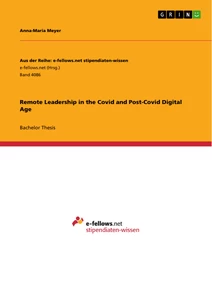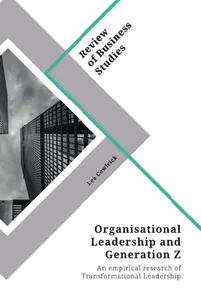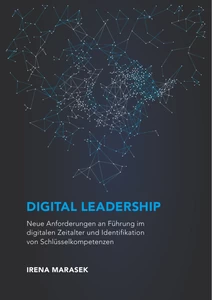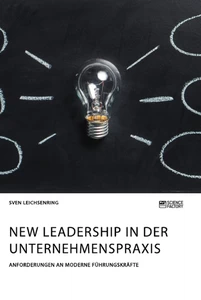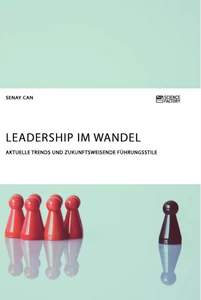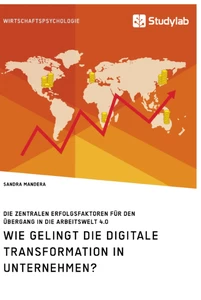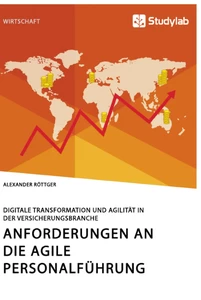
Digital Leadership
Today’s working world is characterized by terms such as New Leadership, New Work, Leadership 4.0 or Agility. But what does this mean concretely?
Even before the corona crisis, digitization was in full swing but lately, the pandemic has ensured that many companies have had to face digital transformation. For many managers and employees, this means an enormous change, and in many cases, a personal challenge. Meanwhile, there are many studies and publications on this topic. They all share one insight: An adequate corporate culture is key to a successful digital transformation. This includes an adapted management style and the early involvement of employees in the change processes. In times of digitization, managers must not only be tech-savvy, but they must also create structures that fit the change. In short: Leadership 4.0 requires digital leadership.
Technological progress does not free us of the responsibility to act as role models in leadership positions.
Miriam Meckel, Chief Editor of Wirtschaftswoche
Digital Transformation, VUCA World and New Work
The 21st century has brought about a disruptive change in society, economy, and technologies. In times of this digital revolution, i.e. Industry 4.0, managers find themselves in an environment that is characterized by constant change. Companies need to digitize as the dynamics of the markets are constantly increasing.
The VUCA world
Recent studies often speak of the “VUCA world” in connection with the changed requirements of today’s society. The term is an acronym for the terms volatility, uncertainty, complexity, and ambiguity. But what does that mean specifically?
Volatility
Digitization and globalization are just two of the major drivers that have shaped today’s working world. They provide dynamic changes that can lead to instability under certain circumstances. This often makes results unpredictable, and understanding the causes becomes increasingly difficult.
Insecurity
The considerations of volatility result in uncertainty in the planning and organization of developments. There is no longer one right way, and therefore, no longer one single leadership strategy.
Complexity
The employment world is becoming increasingly complex, so managers need more flexibility. Decisions are no longer made by a single person because the more complex a situation, the more factors influence it. Thus, more areas of a company are affected and have to contribute something to the solution.
Ambiguity
In communication situations, ambiguities occur more frequently, for example when information is interpreted differently. Ambiguity results from the points mentioned above, as it presupposes that teams have to coordinate more with each other.
The factors of the VUCA world, therefore, put new demands on modern managers, but also on the employees. Within the framework of New Work, however, companies have long since adapted to this.
New Work
The changes in the working world, which are also referred to as New Work, can be roughly summarized in four points:
- Increasingly agile and project-based organizational forms
- Local and temporal flexibility of work
- Increasing relevance of value-based and meaningful work
- Changed management structures and dehierarchization
A working world that is fundamentally changing due to digitization and increasing global networking no longer follows clear rules and offers neither employees nor managers security. Therefore, new team structures and modern leadership are required. What skills should a successful modern manager have? Or to put it another way: What distinguishes a digital leader?
What does digital leadership mean?
Digital leadership has developed into a veritable trend word in recent years. This term is associated with meanings such as leadership and leadership qualities. It is a modern leadership style that is characterized by a fast, agile, cross-hierarchical, and team-oriented way of leading. The terms New Leadership, Leadership 4.0, in the context of the term Industry 4.0, and Digital Leadership are often used synonymously.
Competencies of a Digital Leader
A digital leader is a mixture of a digital expert and a change leader. When making decisions, they should always take into account the following three factors:
- Employees: A digital leader should actively involve each of their employees in the transformation process, and convince them of a project, so that they can develop their full potential.
- Company: A digital leader is responsible for new organizational structures that ensure that companies can react quickly and flexibly to changes.
- Technology: A digital leader knows the latest trends and future-proofs the company against competitors in the digital age. This includes the development of new technologies, for example, to predict customer behavior and to quickly develop a business model.
GRIN recommendation: A concise overview of the topic
The overall objective of this thesis is to investigate the concept of digital leadership by outlining the extent to which it emerges as a unique leadership style in today’s age which is characterized by digital transformation. This shall contribute to closing the research gap around the concept and will be approached by combining the topics of digital transformation and leadership within this research. In order to adequately address the complexity of this research question, three sub-questions shall add to the establishment of a comprehensive answer. Which challenges are leaders facing because of digital transformation? What are the most critical skills leaders need to successfully lead in the digital age? Which type of leadership style is most suitable to successfully lead in the digital age?
Core values of digital leadership
The leadership behavior of a digital leader is specifically geared to the constantly changing, digital reality and is characterized by the characteristics of networking, openness, participation, and agility. These four elements can only be implemented on the basis of trust (+). Together they strengthen the productivity and satisfaction of the employees in the company. This leadership model is called the VOPA+ model.
Define goals correctly with the SMART method
Since employees are given more personal responsibility under the new management style, digital leaders must ensure that they set goals together with their employees. It is not about control, but about orientation for the employees and the company. The end goal is to digitally transform the organization and make it agile. But this does not happen instantly as there are many milestones that have to be achieved.
It is important to formulate smart goals, i.e. concrete and transparent. What distinguishes goals from well-meaning intentions, beautiful wishes, and vague hopes? What makes a goal its goal? Vague phrases like “We need to increase our sales” don’t motivate employees to work towards the goal. To define the goals concretely, the SMART model can help. SMART stands for specific (S), measurable (M), accepted (A), realistic (R), and terminated (T).
A goal formulated according to the SMART method is clear if it meets all five criteria. In the example above regarding the increase in sales, the goal could be formulated as follows: “Gross sales in the product category “Women’s Sneakers” increase by at least 15% in the 2nd quarter of the year compared to the previous year”. To facilitate the process, it is recommended to divide the final goal into intermediate goals. Timed milestones in this strategy provide a better overview and motivation through milestone victories.
Hierarchy is a form of working together. We can flatten hierarchies without removing leadership positions.
Felizitas Gräber, Vice President for Strategy & Transformation at Capgemini
GRIN recommendation: Leading like a Scout
In the context of this thesis, it is to be examined whether the role of the Scout is suitable as an indicator for guidance authority. This is considered to be confirmed if it can be shown that Scouting has a significant influence on the development of leadership competence, or rather imparts relevant skills that enable Scouts to lead successfully. Therefore, the primary research question is: “Does Scouting influence personal leadership competence?”
First, leaders have to give a direction which is meaningful and appeals to their employees’ mind and heart. Secondly, they have a role model function and must live and exemplify the values of the institution. Third, they are responsible for creating values. Any person who does not fulfill these responsibilities fails their leadership position.
Hans Hinterhuber, Austrian economist and management consultant
GRIN recommendation: To deepen the topic
This thesis provides some best practices and other principles to help overcome the challenges and disruption of the Covid-19 pandemic. The author discusses eleven best practices and other principles to help leaders realize potential challenges and how to overcome them. If teams fail to overcome them and adjust to the virtual environment, they will not be able to work effectively and could cause potential damage and losses to the organization by not completing their tasks and goals. These practical implications can help leaders and remote teams adjust to a virtual environment and are why this thesis is very relevant during the Covid-19 pandemic as well as after the pandemic, as these are helpful guidelines for remote leaders.
The Difference Between Digital Leadership and Traditional Leadership
Digital Leadership
-
Responsibility: temporary and integrative, competencies are networked
-
Decision: binding principles and processes that can be reviewed
-
Result: joint coordination and reflection
-
Information: complete and transparent
-
Objectives and assessment: collective and continuous
-
Mistakes and conflicts: learning progress and support
-
Change: innovation, creativity, and personal responsibility
Traditional Leadership
-
Responsibility: permanent and hierarchy-oriented, clear responsibilities
-
Decision: Position and hierarchy are formative
-
Result: Delegation and control
-
Information: selective, dependent on hierarchies
-
Objective and assessment: Focus on individual performance and personal performance appraisal, periodically
-
Mistakes and conflicts: fixed rules and consequences
-
Change: efficiency, stable quality, and minimal risks
Our bestsellers on the subject
More books on Digital Leadership
GRIN sources:
- Leadership in times of digital transformation
- How does digital transformation succeed in companies?
- How digital transformation succeeds in companies
- Digital Leadership. Requirements for modern managers
External sources:
- https://www.dgfp.de/fileadmin/user_upload/DGFP_e.V/Medien/Publikationen/2012-2016/Digital_Leadership_Studie.pdf, p. 22
- https://www.wearesquared.de/glossar/was-ist-digital-leadership
- https://karrierebibel.de/digital-leadership/
- https://www.consultingheads.com/blog/on-the-job/digital-leadership/#infografik

Publish your thesis
At GRIN, you can publish your final assignment for free. It is easy, quick and free of costs. Share your knowledge and make money off of it.

Research Consultants
Over 200,000 specialised publications, directly from universities - Find out more about the latest research and academic work in your area with GRIN.


